Last updated on December 7, 2023
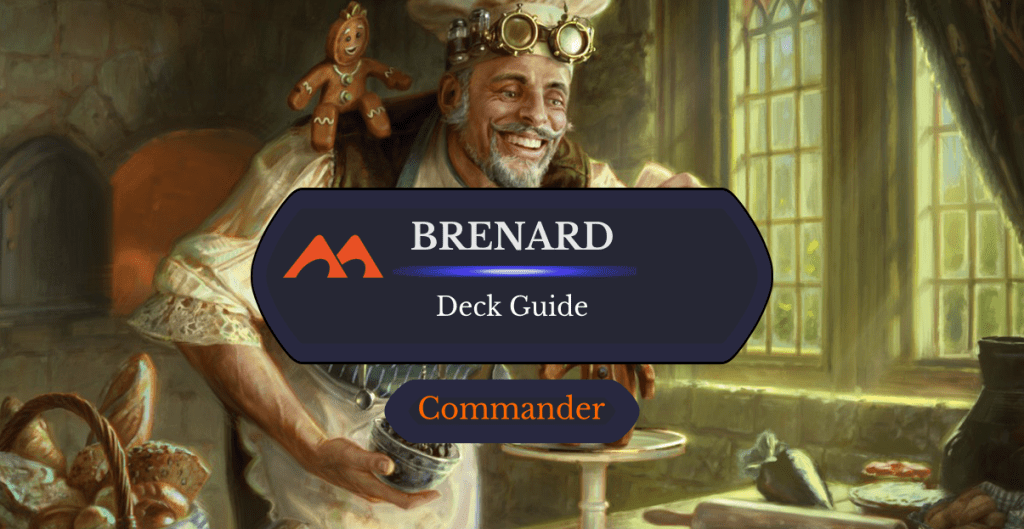
Brenard, Ginger Sculptor | Illustration by Marta Nael
One of my biggest issues when building EDH decks is that I’m very big on having consistent themes and aesthetics. I’ve built quite a few decks where I purposefully chose to leave out some strategically good cards to make space for other cards that fit the theme or aesthetic of the deck. I usually don’t mind doing this because my decks still fit into my playgroup’s power level and it gives me some aesthetic satisfaction. The deck I’ve built for today completely breaks that personal rule.
Brenard, Ginger Sculptor is focused around two specific subtypes: golems and foods. This is thanks to the gingerbread man-style creatures of Eldraine such as Gingerbrute and Syr Ginger, the Meal Ender. It’s a cute and silly theme that revolves around living food creatures. I followed up that theme with a couple hobbit cards that also care about Food tokens. The thing is, the faction with some of the strongest golem themes is so far away from these cutesy ideas: New Phyrexians.
That’s right. This deck is basically built around the unexpected synergy between the hobbits of Middle-earth, and the splicers of New Phyrexia.
The Deck
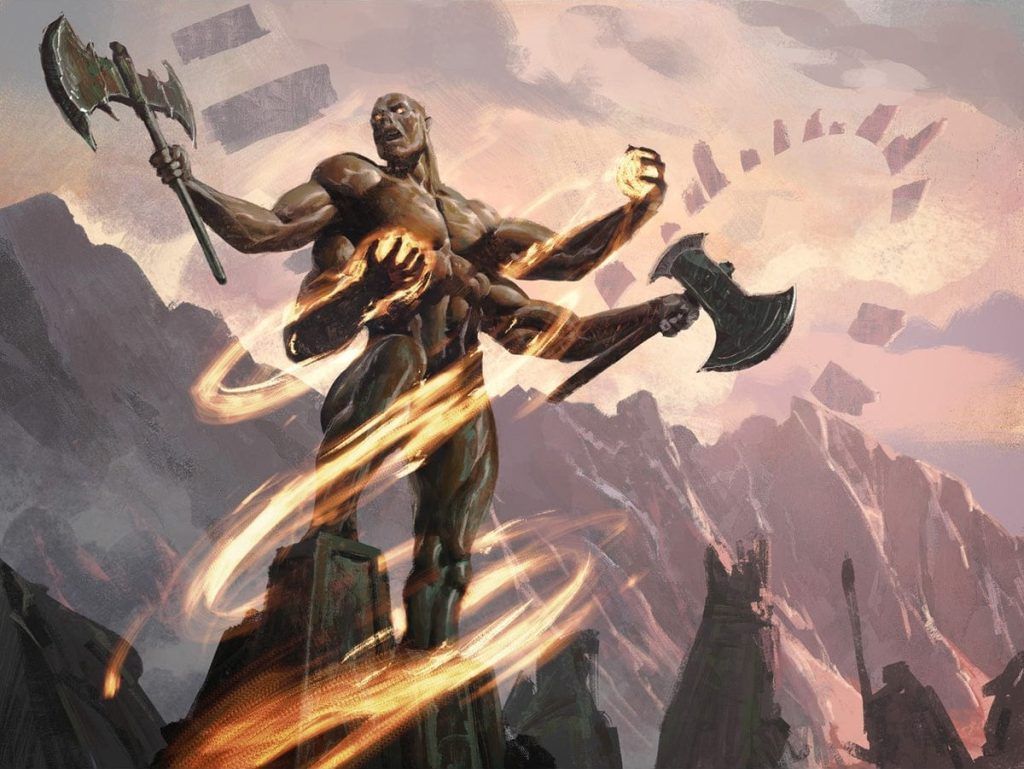
Bronze Guardian | Illustration by Grzegorz Rutkowski
Commander (1)
Creatures (25)
Academy Manufactor
Adrix and Nev, Twincasters
Blade Splicer
Bronze Guardian
Curiosity Crafter
Darksteel Splicer
Gilded Goose
Ich-Tekik, Salvage Splicer
Losheel, Clockwork Scholar
Malcator, Purity Overseer
Master Splicer
Maul Splicer
Meteor Golem
Mondrak, Glory Dominus
Peregrin Took
Phyrexian Triniform
Sam, Loyal Attendant
Samwise Gamgee
Sensor Splicer
Solemn Simulacrum
Syr Ginger, the Meal Ender
Tough Cookie
Triplicate Titan
Vital Splicer
Wing Splicer
Instants (15)
Akroma's Will
Beast Within
Counterspell
Dispatch
Dovin's Veto
Heroic Intervention
Masterful Replication
Negate
Path to Exile
Perplexing Test
Rootborn Defenses
Second Harvest
Sundering Growth
Swords to Plowshares
Teferi's Protection
Artifacts (10)
Arcane Signet
Azorius Signet
Conjurer's Closet
Idol of Oblivion
Inspiring Statuary
Selesnya Signet
Simic Signet
Sol Ring
Unwinding Clock
Witch's Oven
Sorceries (9)
Cultivate
Farseek
Hour of Reckoning
Late to Dinner
March of Progress
Organic Extinction
Revive the Shire
Rise and Shine
Splicer's Skill
Enchantments (5)
City of Death
Growing Ranks
Intangible Virtue
Night of the Sweets' Revenge
Song of the Worldsoul
Lands (35)
Ancient Den
Barkchannel Pathway
Bountiful Promenade
Branchloft Pathway
Breeding Pool
Canopy Vista
Command Tower
Exotic Orchard
Flooded Strand
Forest x2
Gavony Township
Gingerbread Cabin
Hallowed Fountain
Hengegate Pathway
Island x2
Minas Tirith
Misty Rainforest
Plains x3
Prairie Stream
Rejuvenating Springs
Sea of Clouds
Seaside Citadel
Seat of the Synod
Spara's Headquarters
Temple Garden
Temple of Enlightenment
Temple of Mystery
Temple of Plenty
The Shire
Tree of Tales
Windswept Heath
The Commander
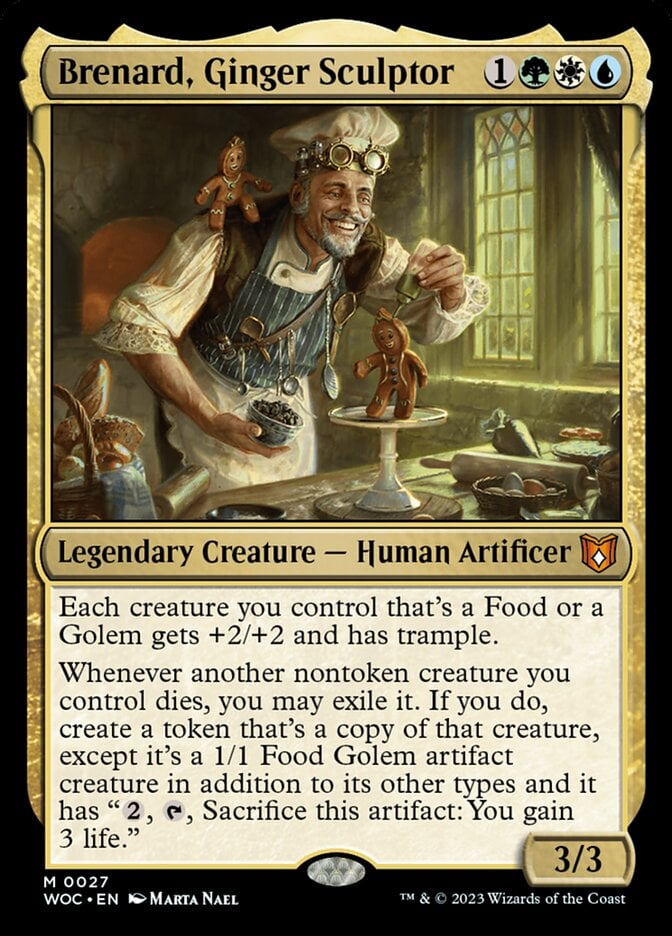
The commander for this deck is what brings the strategy together. There are tons of cards that can make foods and golems work together since they’re both artifact tokens, but there’d been no reason to really pair them up. That’s until Brenard, Ginger Sculptor came around.
This commander obviously synergizes well with the entire deck as both a lord for golems and foods, and a way to generate tokens of creatures you control that would die. But the reason I like it is because it serves as a sort of excuse to build synergies around two things that are so different from each other. And that synergy works great.
There’s no real reason to not cast Brenard, Ginger Sculptor but this deck doesn’t really need to have its commander out most of the time. It’s yet another great tool for its token strategy.
Once on the battlefield, your commander has two very clear advantages. One is that it boosts up all of your golems and foods. This means that the golems you create with your splicers will turn into even bigger threats than they already were. But another important aspect is its second ability. This deck runs a handful of creatures that make the strategy truly work. Food and golem generators, creatures that boost golems, creatures that give foods alternative uses, etc.
You want to ensure all of these stay on the battlefield for as long as possible, and your commander works around that. If and when your utility and enabler creatures get removed, you can create tokens of them that are also foods and golems. This means you not only get to keep their useful abilities on the battlefield, but they also now benefit from all of the boosts you may have for those two subtypes.
The Phyrexian Splicers
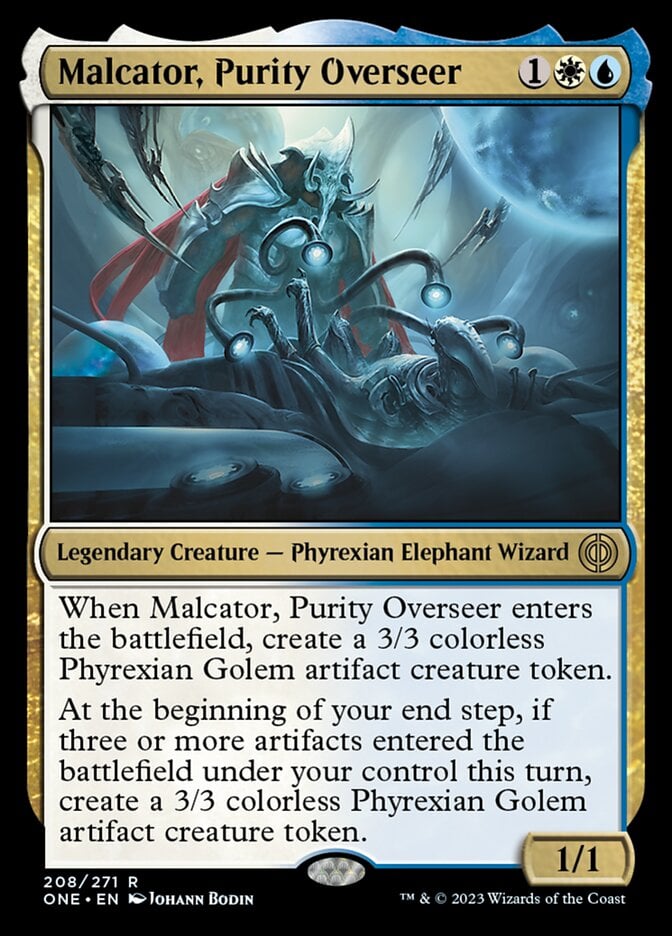
This deck runs eight of the phyrexian splicer creatures, and Malcator, Purity Overseer which doesn’t have splicer in its name but works as another one of them. All nine of these creatures create golem tokens and most of them also have abilities that directly boost your golems in one way or another.
Splicers give your golems keywords, +1/+1 counters, or even create other goles; these Phyrexians allow you to quickly build up a strong attack force that can overwhelm your opponents.
Token Generators
I’ve already mentioned the Phyrexians as golem generators but they’re not the only ones in this deck to make tokens. Gilded Goose, Phyrexian Triniform, Sam, Loyal Attendant, Samwise Gamgee, and Triplicate Titan are all ways to create new tokens.
All of these create either Food tokens at a more consistent rate, or golem tokens usually as a death trigger. This will ensure your battlefield is consistently full of artifact tokens, which we can use to our advantage.
Token Doublers and Populate
No token deck is complete without ways to make even more tokens out of the ones you already have. I didn’t include Parallel Lives and Doubling Season because they’re basically the most obvious cards for this type of deck and I find that kinda boring. Plus they’re very expensive.
This deck has Adrix and Nev, Twincasters and Mondrak, Glory Dominus to fill up that space. Of course, this makes them more susceptible to removal, but if you have your commander out that means you can create token copies of them.
We also have Academy Manufactor and Peregrin Took to get even more value out of each token generator we play.
Finally, we have the populate spells. Growing Ranks and Song of the Worldsoul will consistently build up your side of the field to overwhelm your opponents quickly and aggressively.
March of Progress and Second Harvest are both basically game-ending spells. They should be played to extend your boardstate as much as possible before you overrun your opponents with a massive army of golems.
Protection, Removal, and Interaction
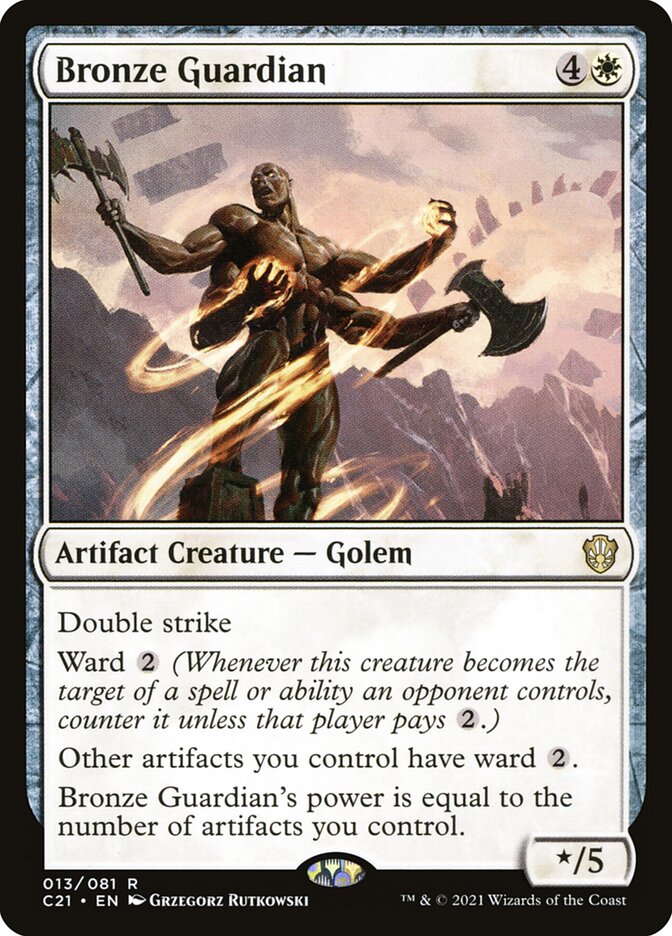
Bronze Guardian gives all your artifacts ward. This works especially well with your commander’s second ability, since the creature copies are artifact creature tokens. That means you can grant ward to all of your key utility creatures, making them ever harder to target.
Losheel, Clockwork Scholar, Rootborn Defenses, Heroic Intervention, and Teferi's Protection all serve to protect your creatures, especially tokens.
The deck runs a few counterspells, as well as targeted removal like Swords to Plowshares, Path to Exile, Dispatch, and Beast Within.
There’s also a handful of wrath effects. These are especially focused on the artifact token strategy of the deck. Perplexing Test, Hour of Reckoning, and Organic Extinction work as pretty much one-sided wraths to clear the way for your token armies.
Additional Utilities
There’s quite a few utility cards in this deck. Conjurer's Closet allows you to repeat ETB effects like those of the splicers, constantly building up your token army. Idol of Oblivion will ensure some consistent card draw since you can expect to be creating tokens almost every turn.
I don’t think I even need to explain how Inspiring Statuary and Unwinding Clock directly benefit this deck.
Ramp
The deck has some of the more obvious ramp spells and mana rocks, such as Sol Ring or Farseek.
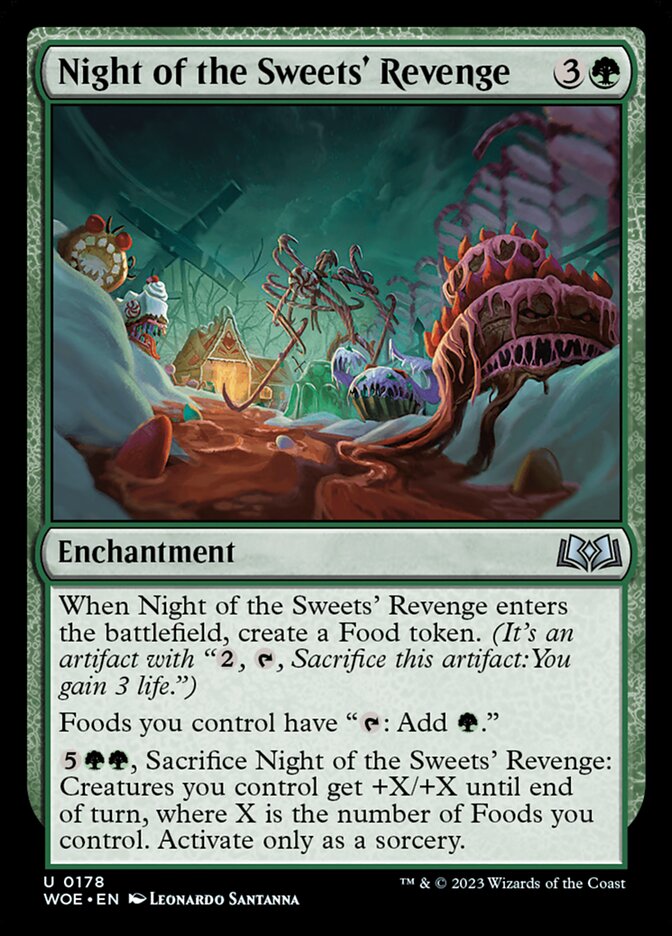
More worthy of mention is Night of the Sweets' Revenge; this card’ll make all of your Food tokens into mana sources. Sure, they can only generate green, but it’s still a great way to fix your mana generation.
The Mana Base
The deck runs mostly fetch and dual lands like bond, tango, and shock lands. There are also a few basics to fetch with things like Cultivate. You also have The Shire and Minas Tirith since they fit pretty nicely within the deck’s strategy.
The Strategy
This is a synergy deck. Ideally you’ll have your commander out more often than not to boost your tokens while also ensuring you have ways to get copies of any creatures that get destroyed. But even if your commander doesn’t come out that much, the rest of the deck is meant to synergize well.
You have tons of ways of creating golems and Food tokens. Golems are the most straightforward of these two: Build a large army of 3/3 creatures (possibly boosting them one way or another) to take out your opponents through sheer damage. Foods are a bit more of a complement to this. Cards like Samwise Gamgee, Peregrin Took, and Night of the Sweets' Revenge will give you alternate uses for your Food tokens beyond simply gaining you life. Not to mention Rise and Shine, which can effectively turn a pile of Food tokens into an overwhelming attack force.
Combos and Interactions
This deck doesn’t so much combo as it does synergize and interact with itself. The abundance of token doublers, populate cards, artifact support cards, etc., all add up to make this a pretty well-oiled machine that’ll aim at building a strong battlefield relatively quickly.
I didn’t add any particularly strong combos other than possible finishing combos like casting Hour of Reckoning to clear the way, then using Rise and Shine to quickly overwhelm your opponents.
Rule 0 Violations Check
As far as I’m aware, the deck doesn’t have infinite combos or plays that completely lock out opponents from playing. The one-sided wraths may make some players get a bit salty, but I wouldn’t consider them Rule 0 violations. There can also be some shenanigans regarding making absurd amounts of tokens if you have a strong enough board but, again, that’s just how the game works.
Budget Options
Luckily none of the truly key cards in this deck are all that expensive. Things like Mondrak, Glory Dominus and Teferi's Protection are obviously great in this deck, but they can both be replaced with things that still synergize well enough with the rest of the deck.
There are plenty of cards that can either benefit a token-heavy or food-centric strategy, so replacing almost anything is possible, even if it lowers the strength of your deck slightly. Urza, Prince of Kroog is a solid boost for your golems. Golden Guardian gives a nice way to expand your golem army. The Goose Mother both creates and gives you other uses for Food tokens.
Cards like Second Harvest and Akroma's Will can be considered ‘win more’ cards (aka cards that are basically only good when you’re already winning or quite ahead of your opponents) so they can easily be taken out for something that can give a more consistent and long-term advantage.
Obviously, any overly-expensive lands like fetch lands can simply be replaced with any other, less expensive land. Sure it won’t be as fast or efficient, but it’s not that big of a problem.
Other Builds
Alternative builds around this commander can focus more strongly on either of the two main themes this deck is built around.
Some builds also go for pod-style or sacrifice strategies. This is because Brenard, Ginger Sculptor essentially allows you to keep a copy of the sacrificed creature used to activate these effects, basically letting you sacrifice them with almost no drawback.
Wrap Up
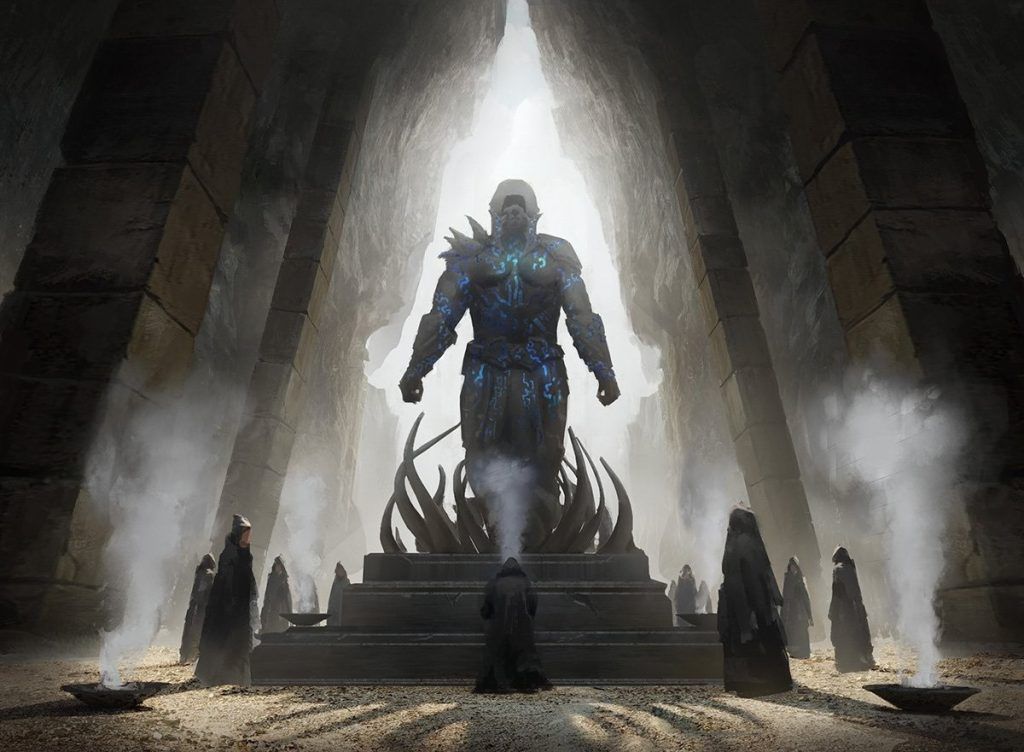
Idol of Oblivion | Illustration by Piotr Dura
I really like the design of this commander. I understand that the people at Wizards designed it around the idea of Gingerbrute and other food-creatures, but the fact that this is a commander that brings together both hobbits and Phyrexians makes it really funny while still working considerably well. I’m a very casual player, so this may not be the most optimized version of this deck, but even at a casual level it still plays pretty strong.
But enough about what I think. Did you like this deck? What would you change about it? Do you find its thematic silliness as funny as I do? Leave a comment letting us know! And don’t forget to pay our Discord server a visit to join an amazing community of other MTG fans!
That’s all from me for now. Have a good one, and I’ll see you next time!
Follow Draftsim for awesome articles and set updates:


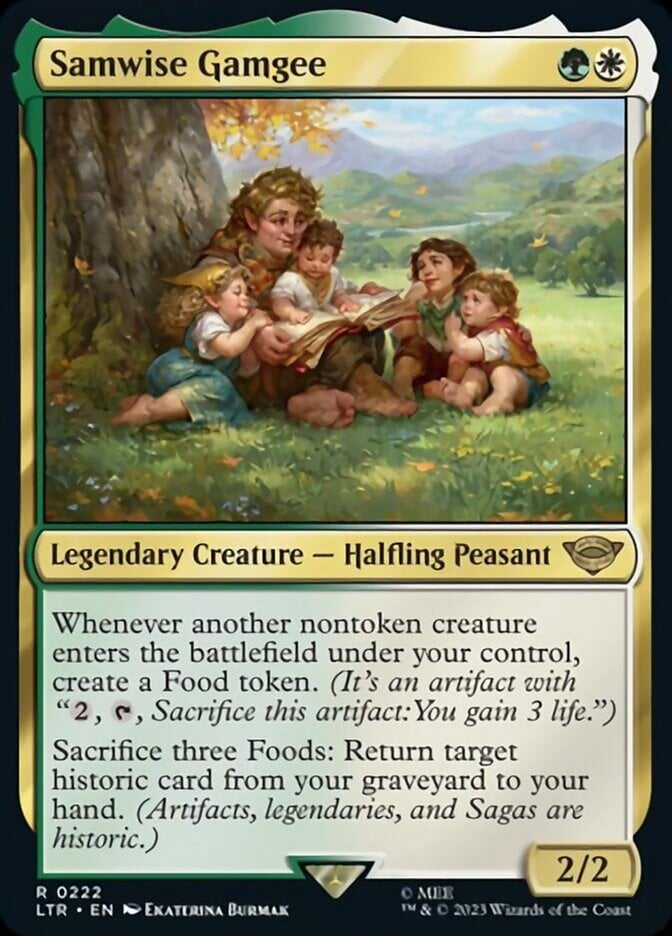
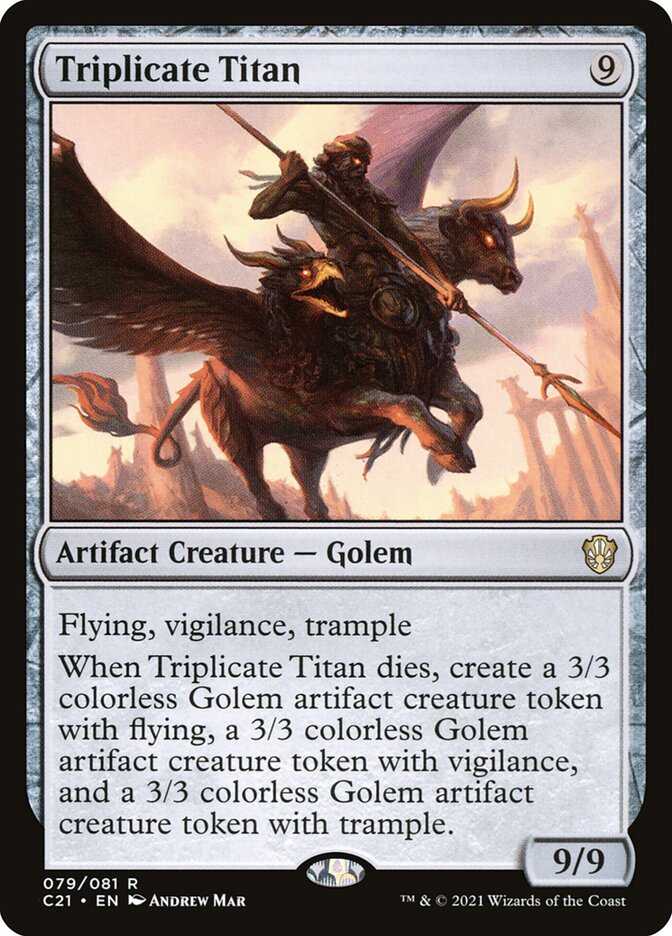
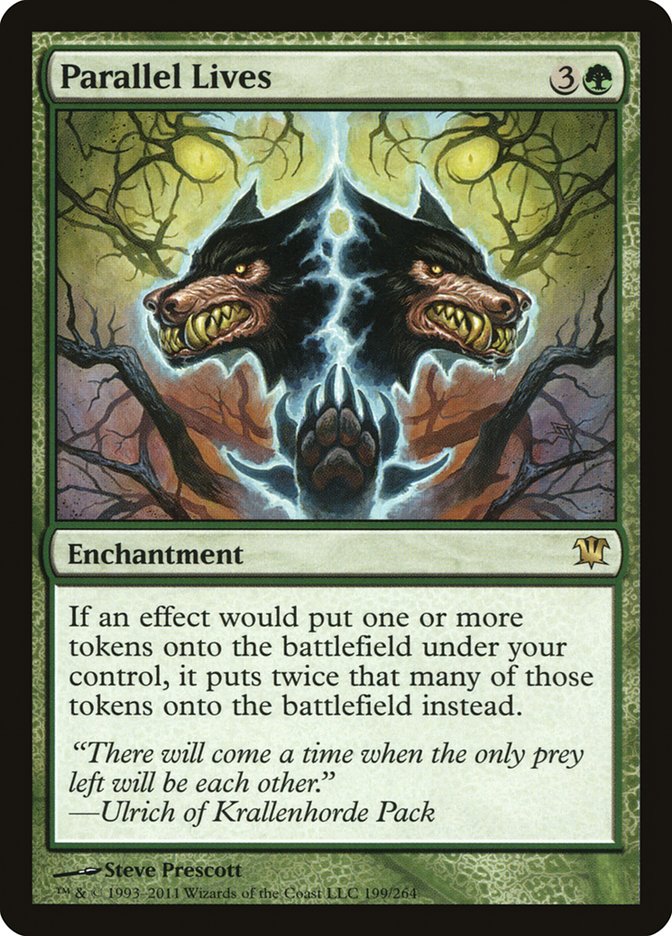

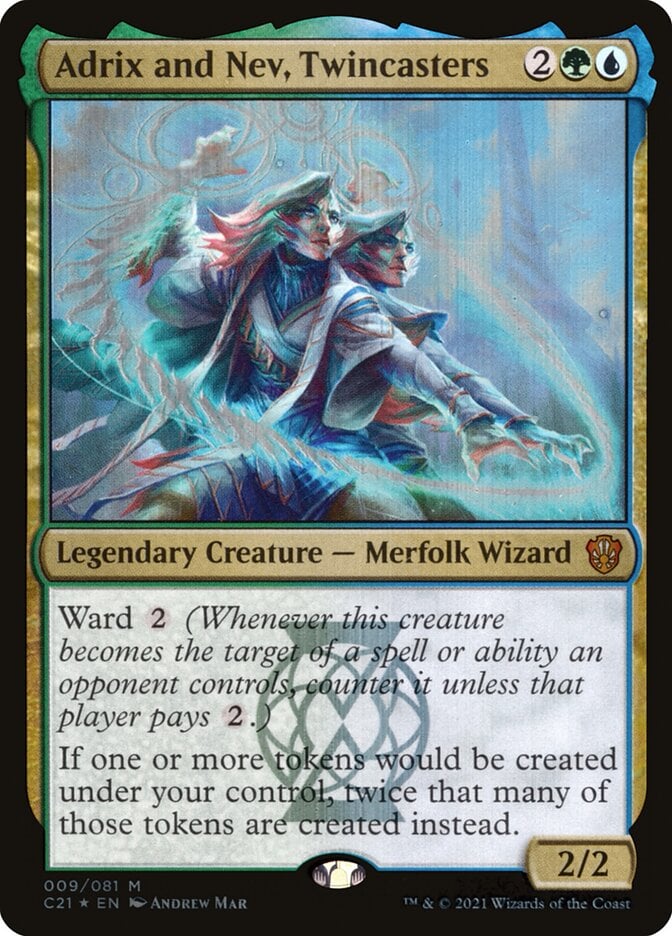
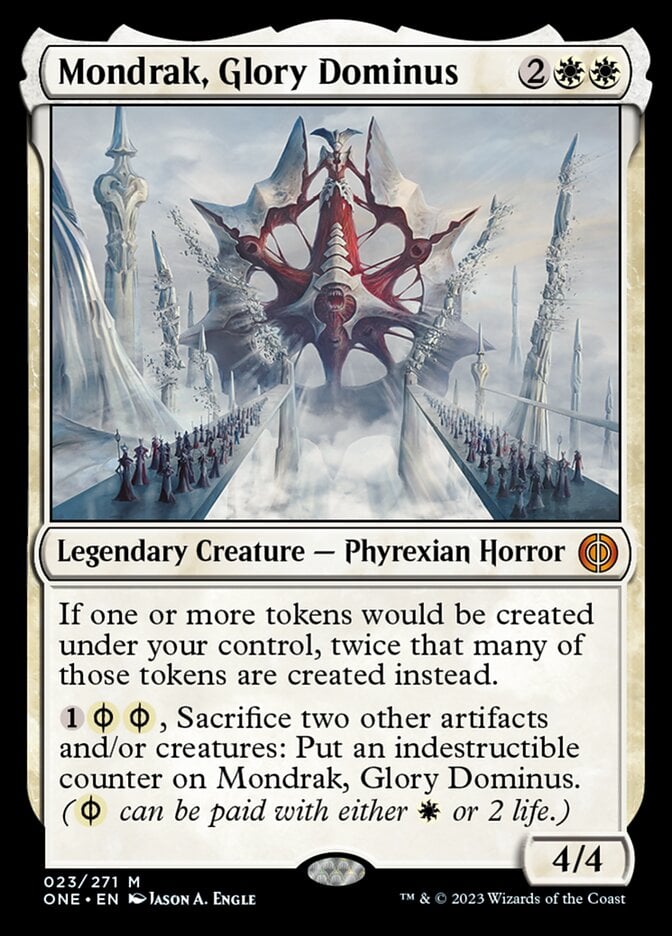
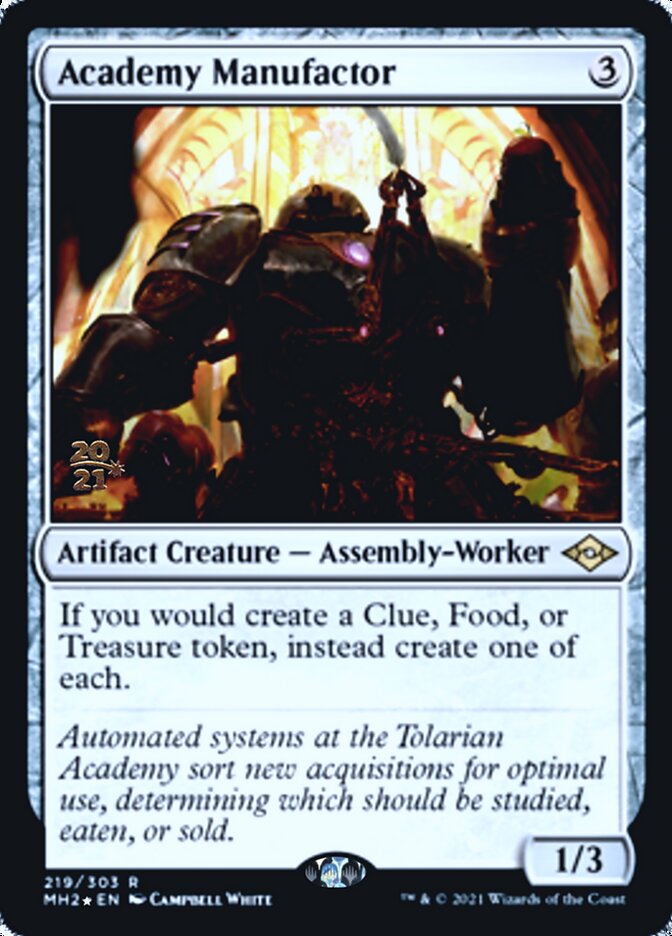
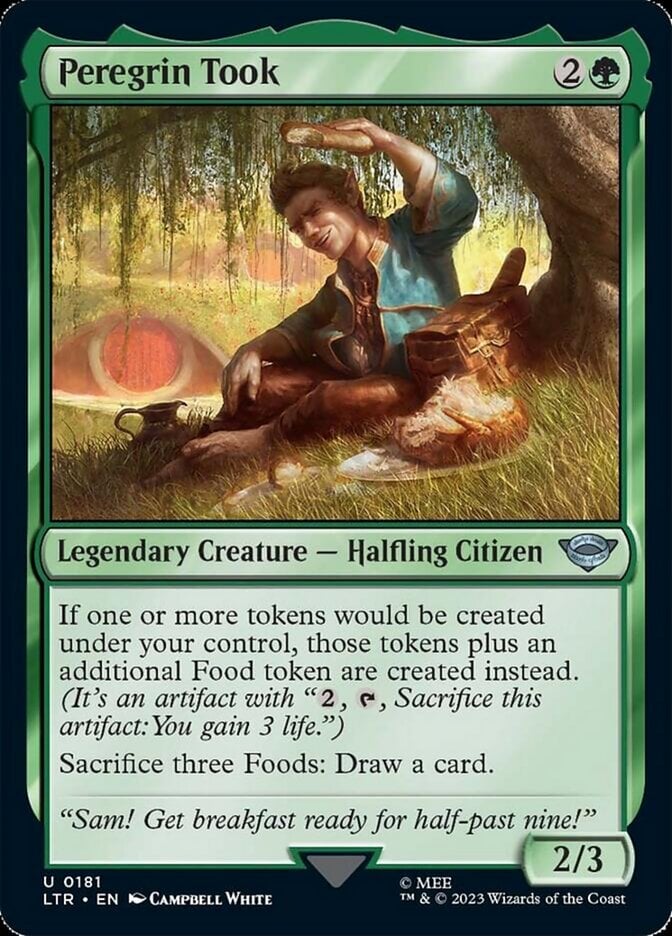
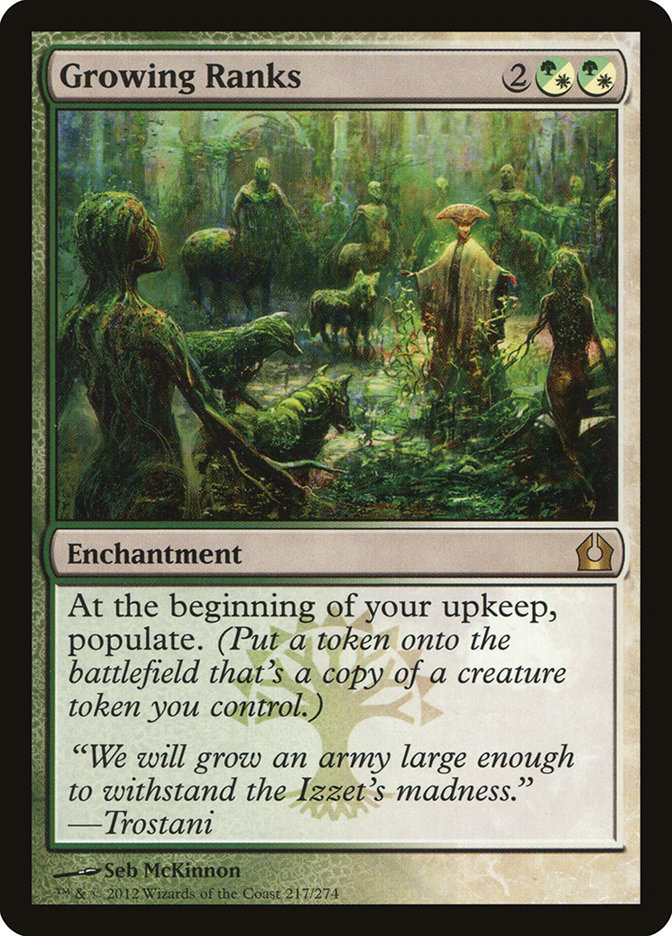
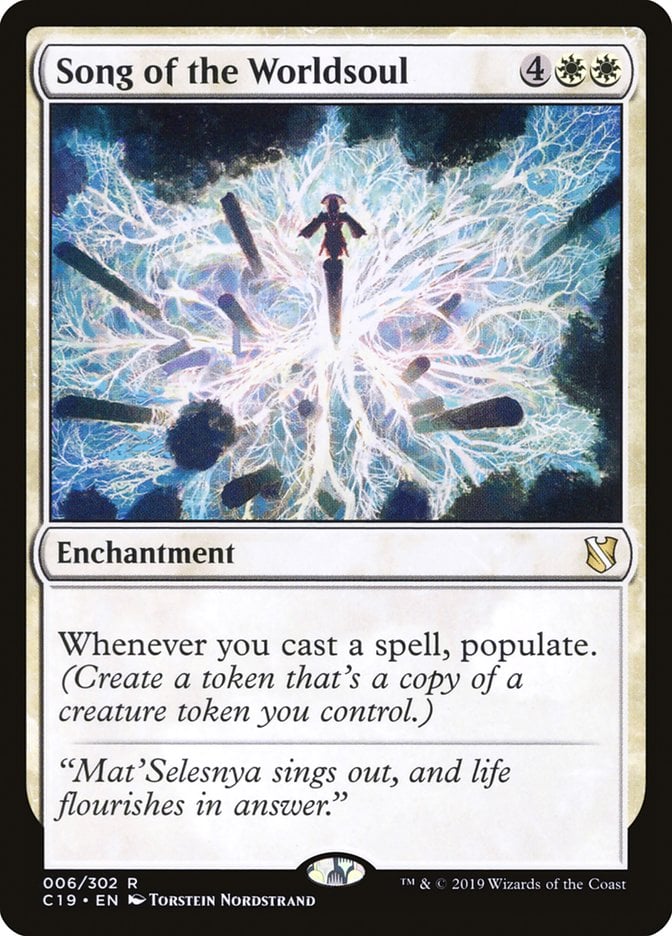

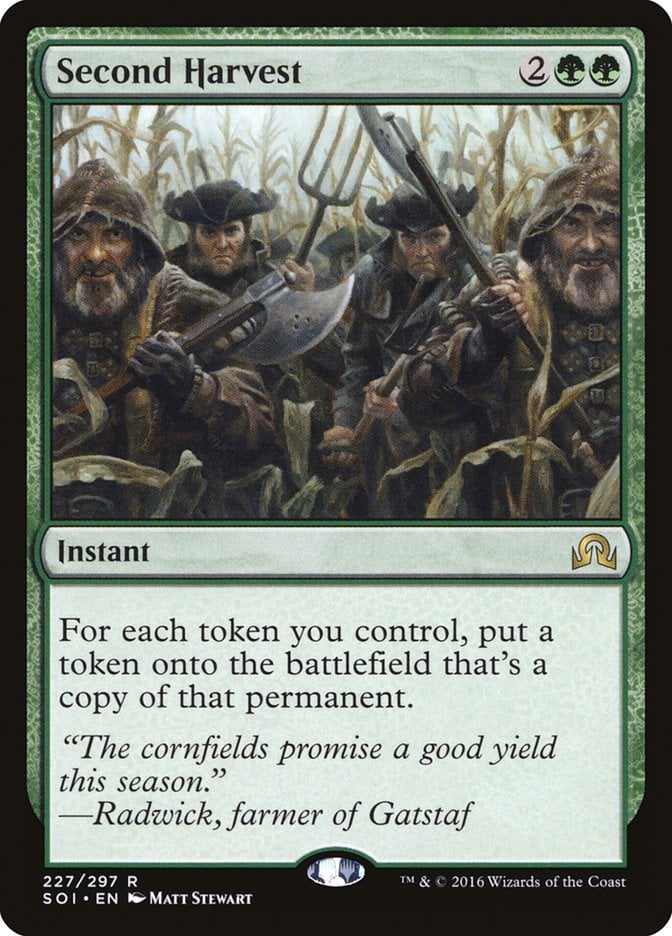
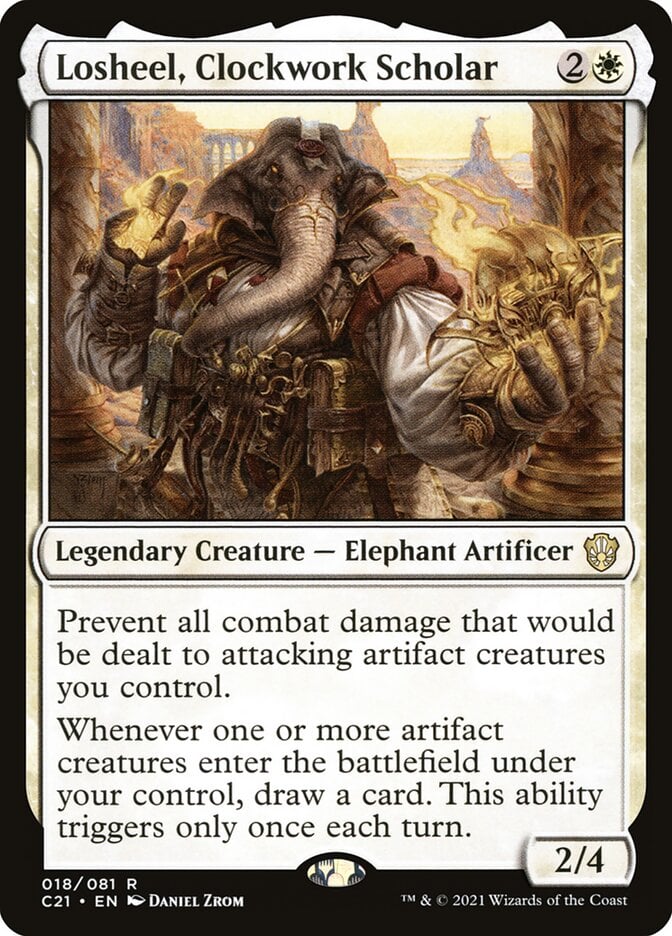
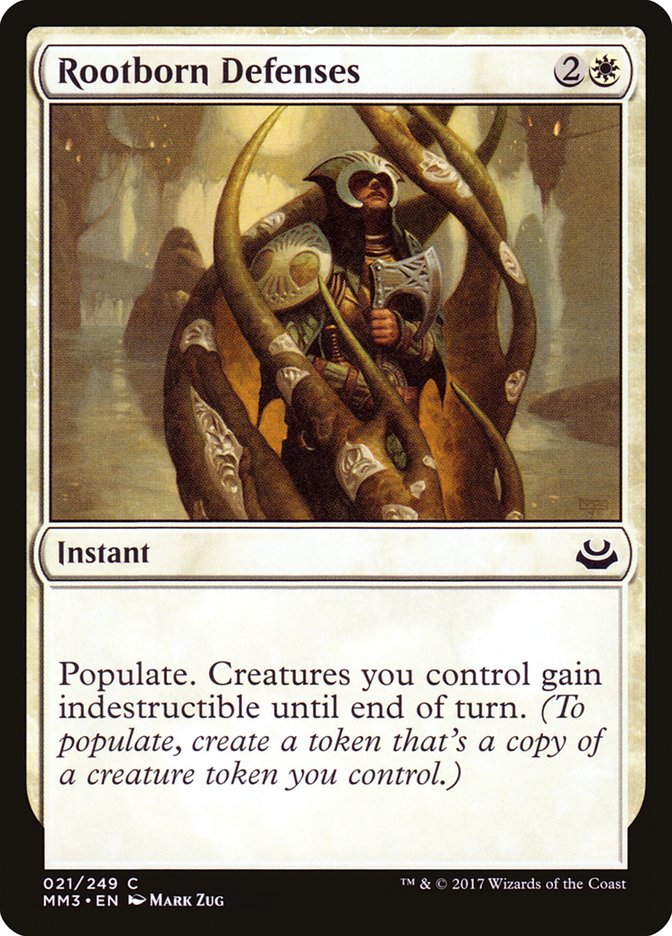
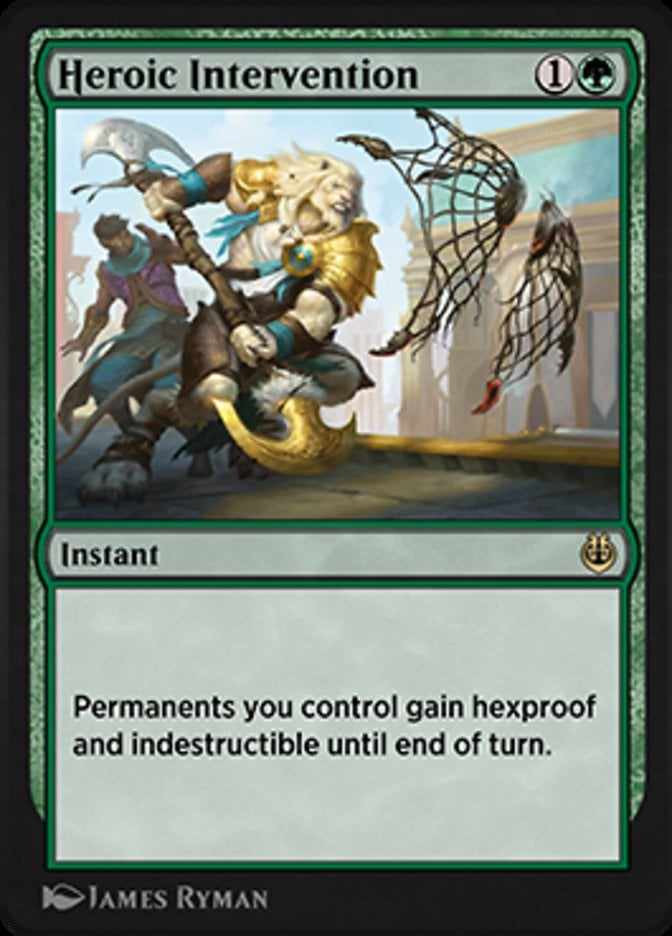
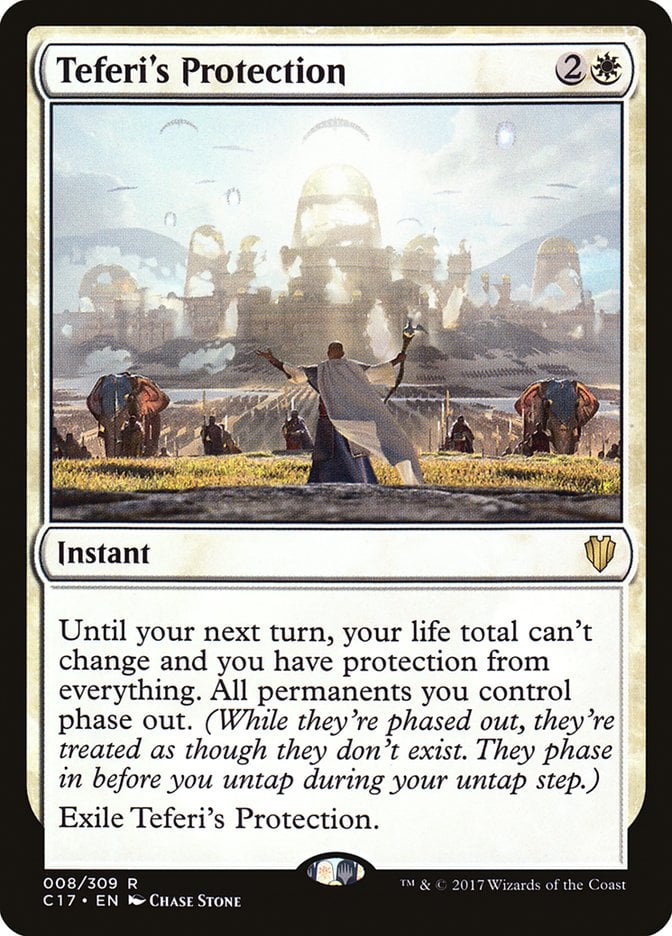
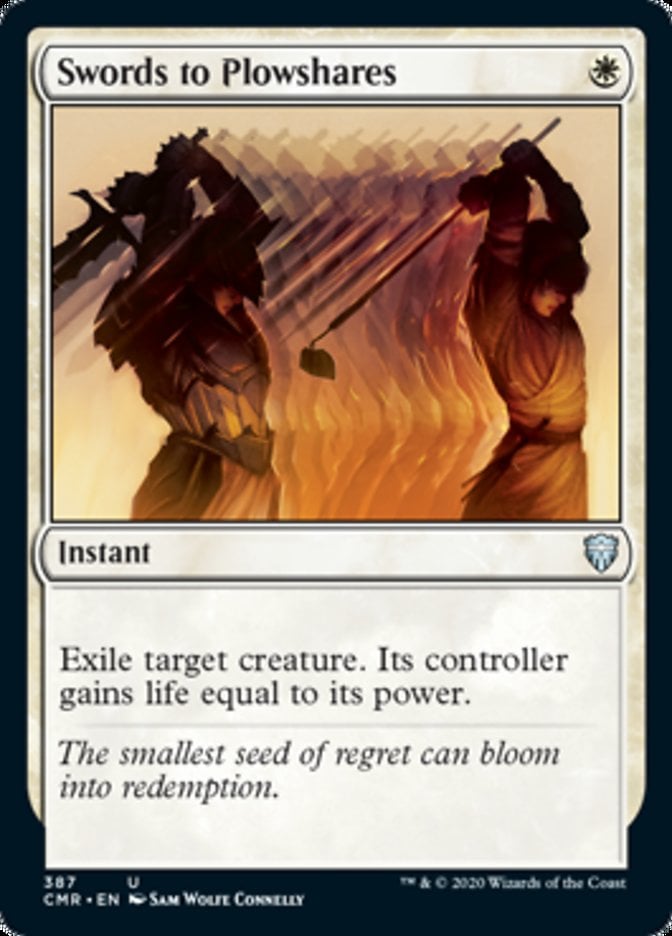



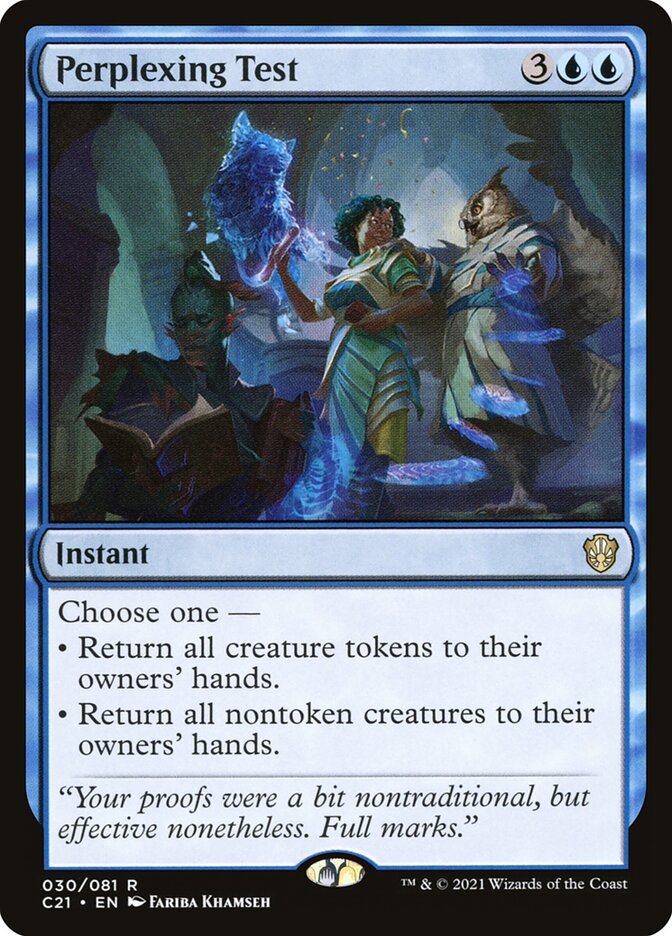
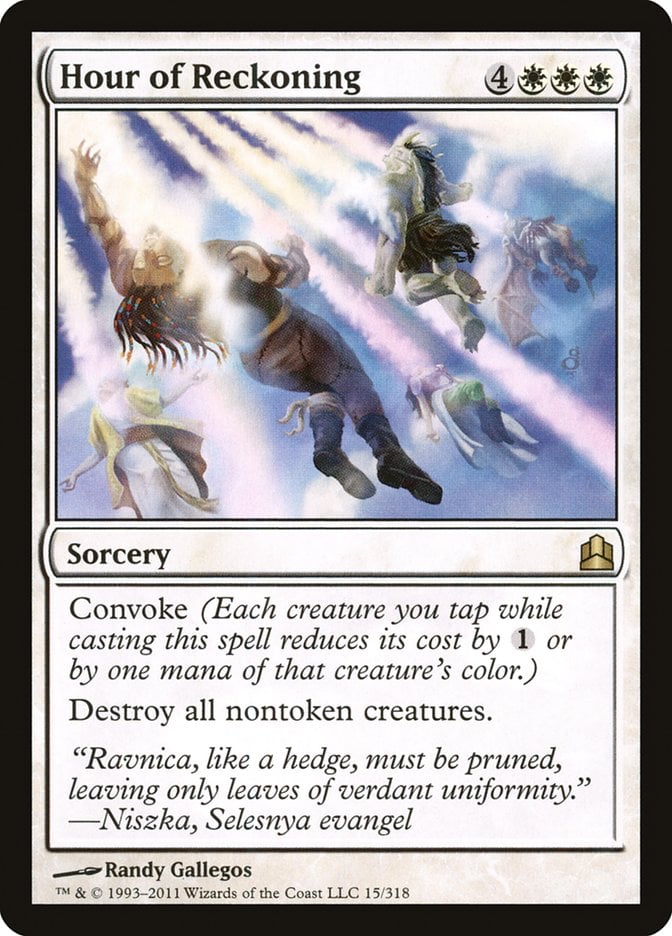
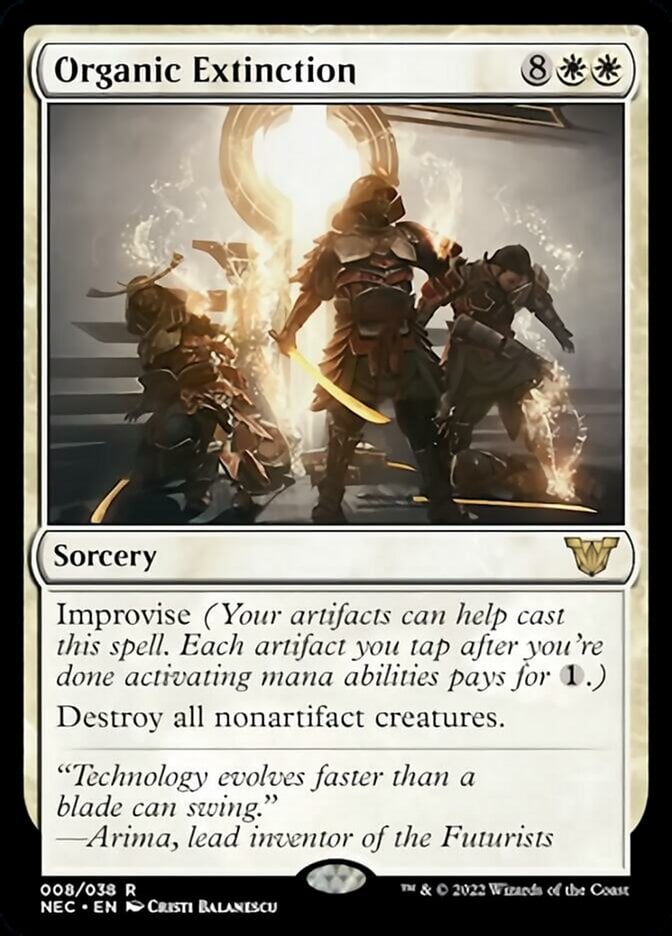
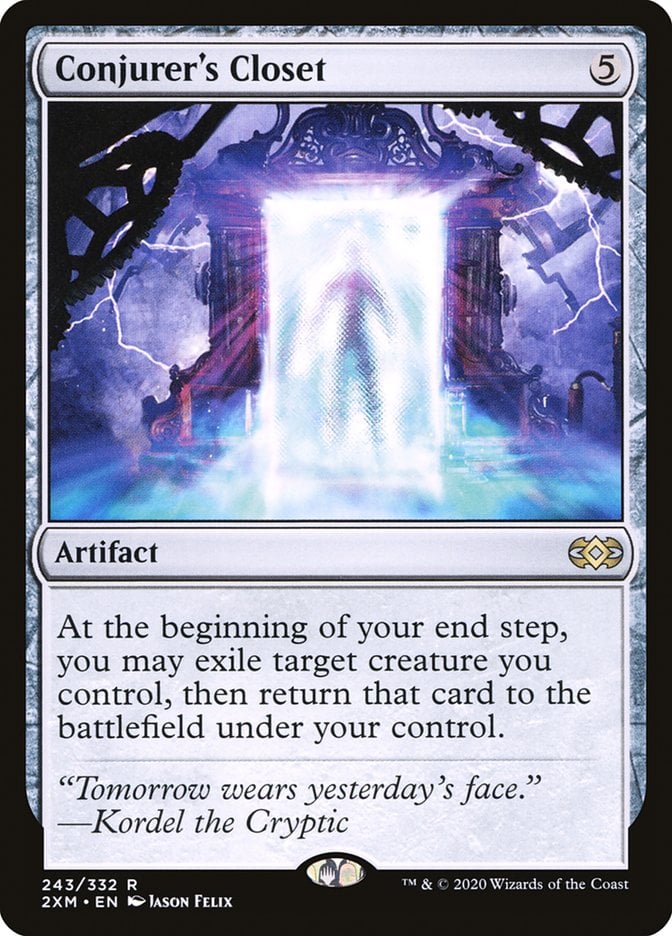
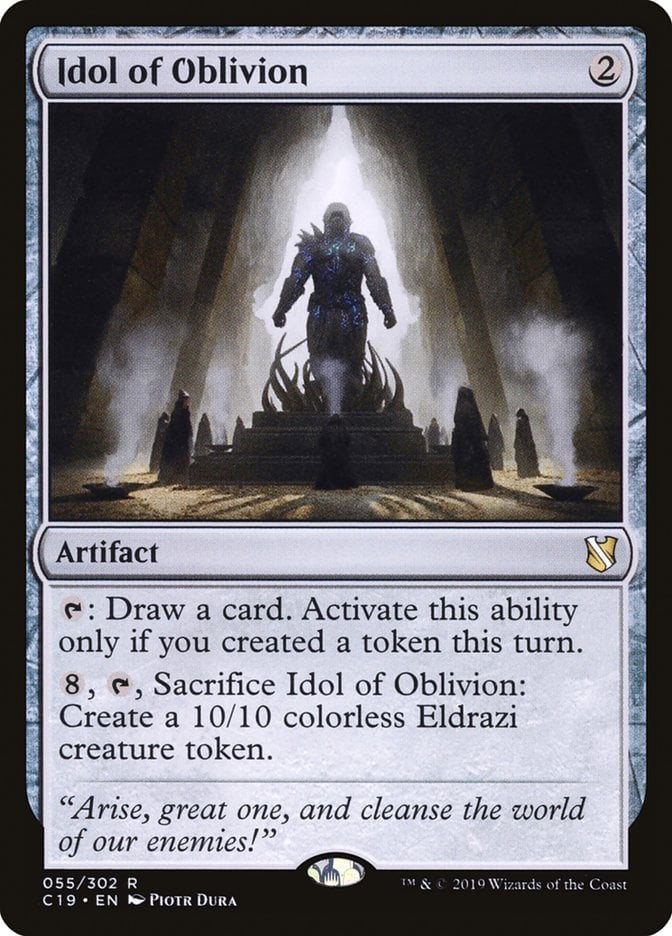
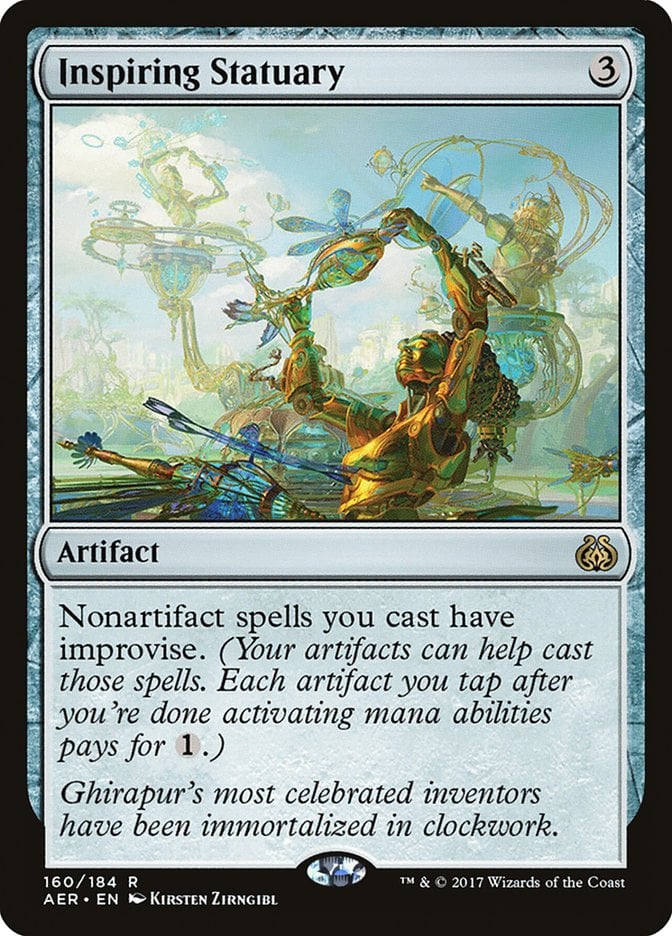
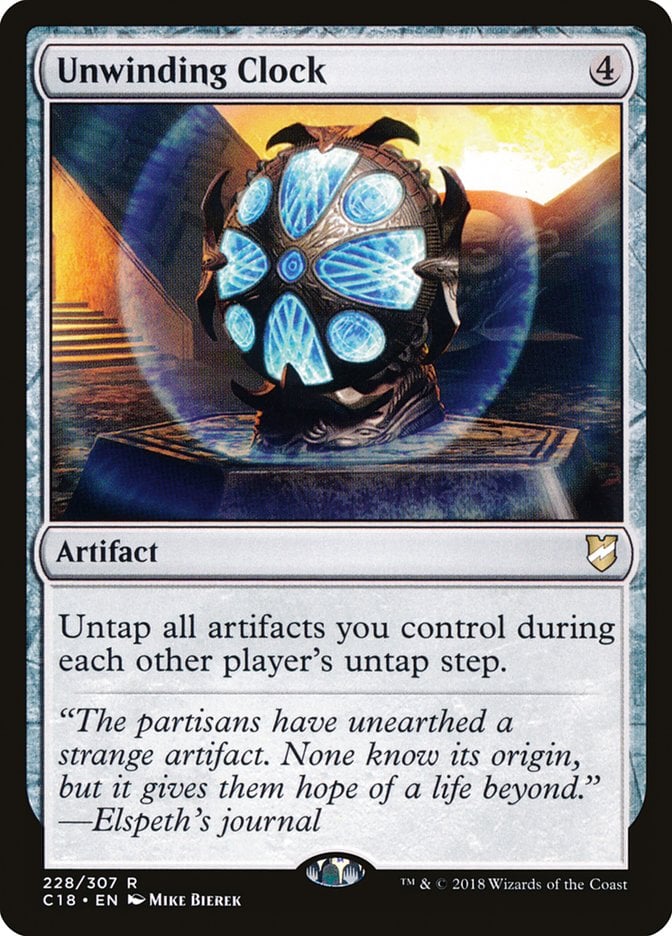

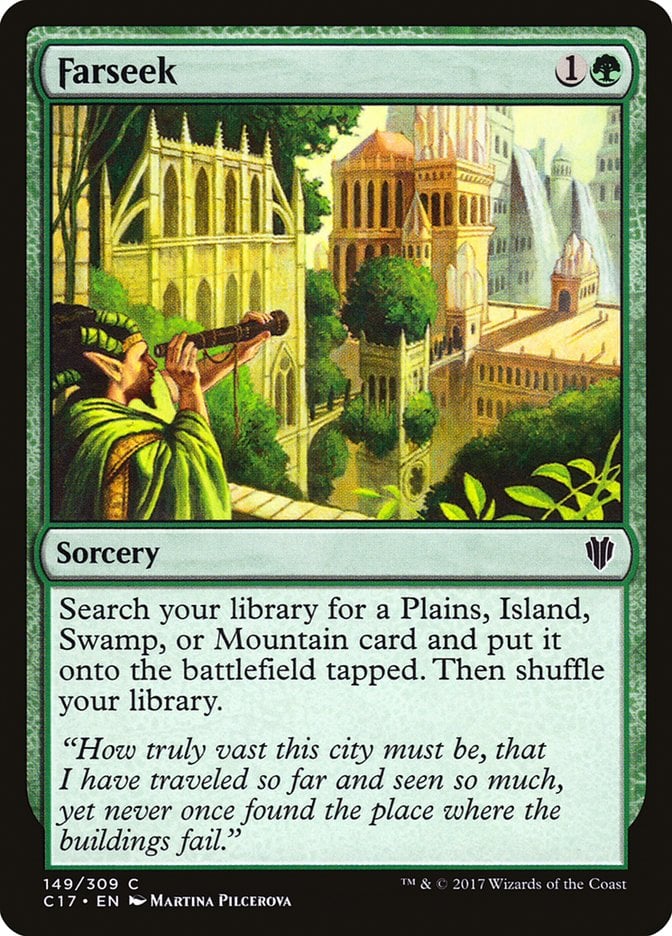



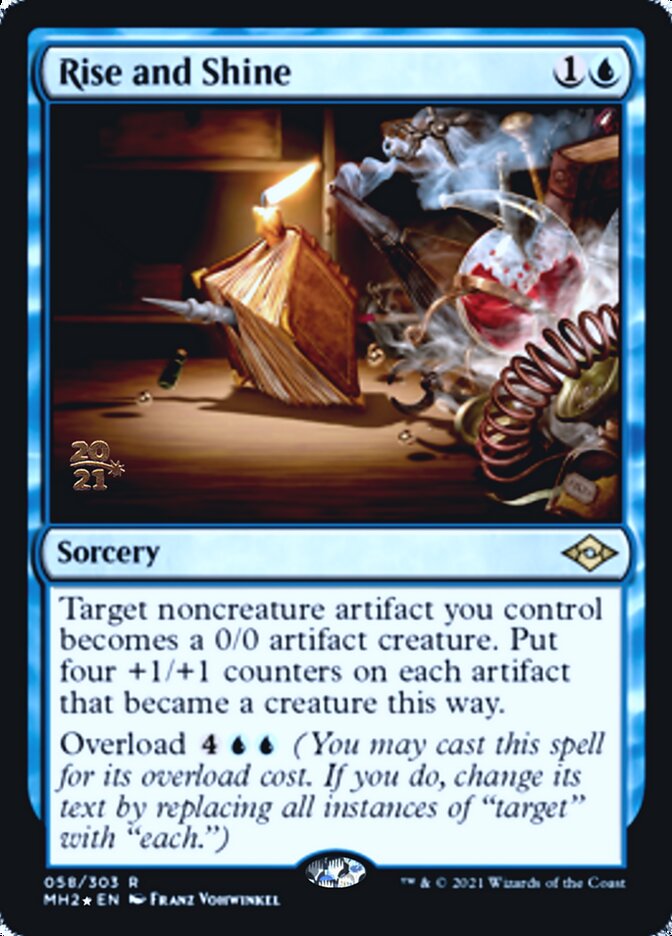

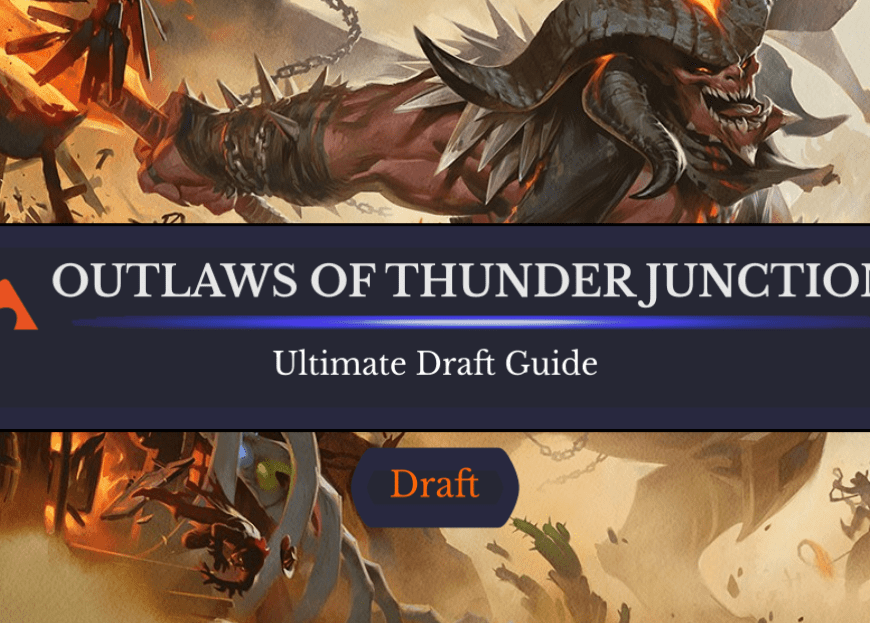
Add Comment